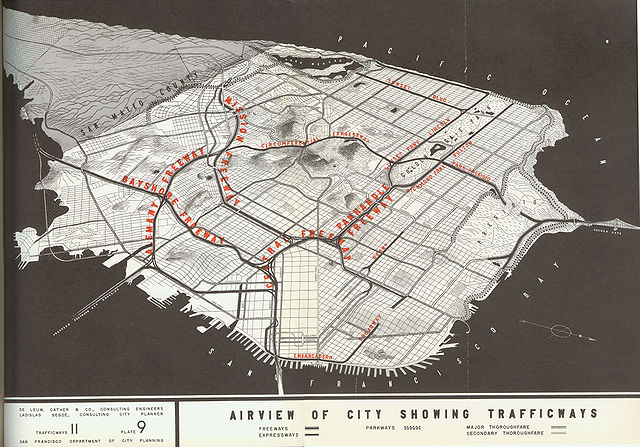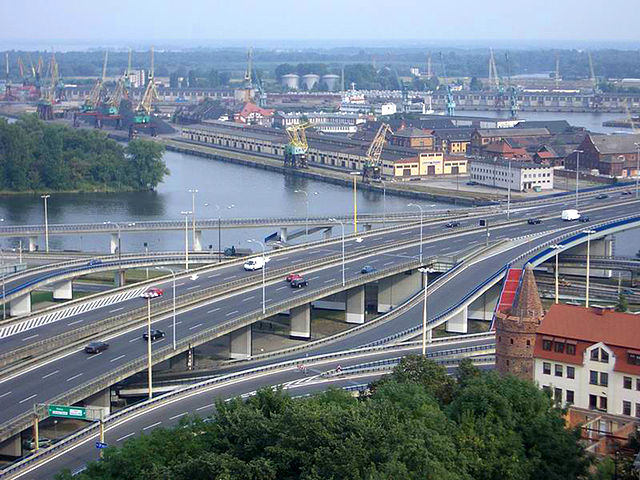Transportation planning is the process of defining future policies, goals, investments, and spatial planning designs to prepare for future needs to move people and goods to destinations. As practiced today, it is a collaborative process that incorporates the input of many stakeholders including various government agencies, the public and private businesses. Transportation planners apply a multi-modal and/or comprehensive approach to analyzing the wide range of alternatives and impacts on the transportation system to influence beneficial outcomes.
1948 San Francisco roadway plan which inspired the Freeway Revolt
Chicago Transit Authority Chicago 'L' trains use elevated tracks for a portion of the system, known as the Loop, which is in the Chicago Loop community area. It is an example of the siting of transportation facilities that results from transportation planning.
A bypass the Old Town in Szczecin, Poland
Spatial planning mediates between the respective claims on space of the state, market, and community. In so doing, three different mechanisms of involving stakeholders, integrating sectoral policies and promoting development projects mark the three schools of transformative strategy formulation, innovation action and performance in spatial planning
The graphical scheme of the Detailed Urbanist Plan for a settlement within the Municipality of Aerodrom in the City of Skopje, North Macedonia.




